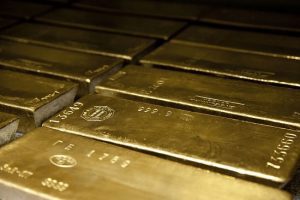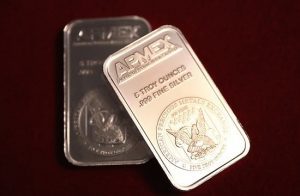Calculating the Density of Gold and Silver
10/03/2021Daniel Fisher
Free & fully insured UK Delivery. Learn more
Secure & flexible payments. Learn more

Buyback Guarantee Learn more
Gold and silver are often referred to as the ‘go-to’ precious metals for any investor. The yellow metal is revered around the world for its value and has many different uses. Gold has historically been one of the precious metals of choice for minting coins. Of course, it has numerous other industrial uses. Have you ever wondered why gold is used widely? Gold has certain properties that ensure its usefulness across industries. In this article, we will briefly overview some of these properties, and also focus on gold density.
Gold is a highly malleable and ductile metal. The yellow metal is so malleable that 1 ounce can be pressed and spread over an area of 300 square feet. As a ductile metal, it can also be pulled out into wires. Gold has another property that makes it ideal for several industrial uses. It is a very good conductor of heat, as well, as electricity. This combination of ductility and conductivity make it invaluable in the electronics industry. Another great property of gold is that it does not corrode easily. Gold remains unaffected when exposed to air, or most other reagents.

Gold is one of the densest metals on Earth
Although gold is a malleable metal, the density is fairly high. Gold density is 19.3 g/cm³. When we refer to a metal density chart, we realise that the density of gold is much higher than most base metals. For example, lead has a density of only 11.3 g/cm³. Similarly, this number stands at 7.87 for iron, 8.90 for nickel and 7.7 for bronze. When compared to other precious metals, the density of gold is still higher than metals like rhodium or ruthenium, which are 12.4 and 12.1, respectively. However, platinum is higher than gold density and stands at 21.5. Similarly, the density of iridium is also higher than the density of gold at 22.5. Silver, on the other hand, is nearly half the density of gold at only 10.5.
So, we can see from the above comparisons that gold density is generally higher than most other metals. Despite this, it enjoys the properties of malleability and ductility, which is unique.

The density of silver is approximately half that of gold
Well, the classical definition of the density of an object. Is the ratio of its mass to its volume. This is the reason why density is represented by grams per cubic centimetre – unit mass per unit volume. Now, mass is pretty much the same concept as weight. So, all we have to do is to weigh a bar of gold and divide this number by its volume. Therefore, one cubic centimetre of gold will weigh 19.3 g. Similarly, a cubic centimetre of silver will weigh 10.5 g
The softness of a metal is its ability to easily change shape when pressure or stress is applied. The key to our answer lies deep in physics, where we analyse the structure of gold. Like all other metals, gold has a crystalline structure. This structure is essentially an arrangement of different planes of crystals. Metals which have a higher density like gold are more likely to have defects within these planes. These are called slip planes, and they allow the metal to bend easily. Gold and silver have more of these planes, making them extremely malleable. On the other hand, base metals like iron are more rigid and cannot be bent easily.
When you call Physical Gold, your queries need not necessarily be about investments. We pride ourselves on being recognised as one of the most reputed precious metal dealers in the country. Our experts are extremely knowledgeable about gold and can answer all your questions related to the yellow metal. Call us on (020) 7060 9992. You can also visit our website and get in touch with us online and a member of our team will revert to you at the earliest regarding your queries.
Image credits: Wikimedia Commons and Wikimedia Commons
Live Gold Spot Price in Sterling. Gold is one of the densest of all metals. It is a good conductor of heat and electricity. It is also soft and the most malleable and ductile of the elements; an ounce (31.1 grams; gold is weighed in troy ounces) can be beaten out to 187 square feet (about 17 square metres) in extremely thin sheets called gold leaf.
Live Silver Spot Price in Sterling. Silver (Ag), chemical element, a white lustrous metal valued for its decorative beauty and electrical conductivity. Silver is located in Group 11 (Ib) and Period 5 of the periodic table, between copper (Period 4) and gold (Period 6), and its physical and chemical properties are intermediate between those two metals.